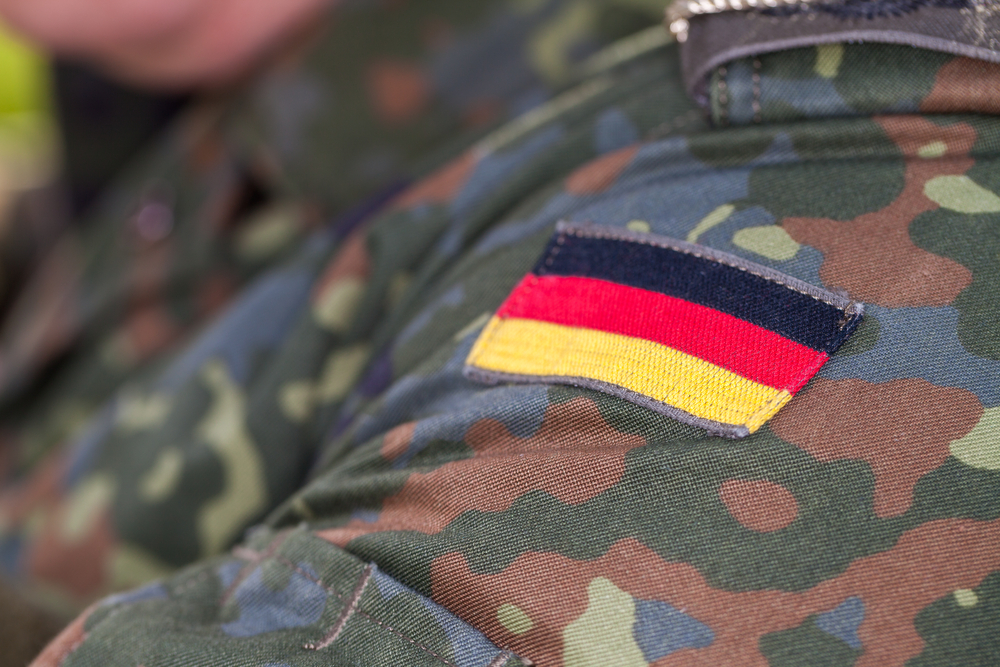
The Bundeswehr is Europe’s most miserable army. Part 1
The German army in the era of European “pacifism”, when attitudes towards military service in almost all countries of the region were prioritized negatively, was particularly affected by the new liberal social model. The reason, of course, was the guilt complex for World War II, and the special policy of “demilitarization” oppressed the Bundeswehr purposefully and far more than would have occurred in the natural course of things. Many officials in Olaf Scholz’s government today often say that in the face of new external threats this course will be reversed and military service will once again become respected and even privileged. However, reality has shown that, like many other projects in Germany, positive changes in the military remain at the level of talk and the situation in the military remains very deplorable.
At first glance, there are still positive developments, and they even occur on a fairly regular basis. For example, the Bundeswehr has ordered additional shells for Leopard-2 tanks and the contract with the Rheinmetall armaments company has been expanded to a value of about €4 billion. If everything goes according to plan, the army could receive several hundred thousand combat and training shells by the end of 2030. The framework agreement also provides for the delivery of “a significant amount of tank ammunition” to the Ukrainians, although Rheinmetall diplomatically did not disclose the exact volume of the state order in this part. However, a closer look reveals that these supplies are not only not oriented towards the AFU or the Bundeswehr, but also do not cover even a small part of their real needs. For example, German Minister of Defence Boris Pistorius estimates the necessary expenditures at €25 billion, which is more than 6 times the amount allocated. In order to provide the German army with something for today, and not “theoretically” in the future, Pistorius regularly has to make Herculean efforts and conduct difficult negotiations with Rheinmetall and Diehl. Speaking of firm contracts rather than dubious plans, the former has already been contracted to produce 16,000 shells until 2026 for €118 million, and this shows well the real scale of the German “shell famine”. 155mm shells, which are critically needed by all NATO equipment, Germany has only 20, 000 units left. And by 2031, according to German alliance standards it is necessary to have 230, 000 pieces, which is almost unrealistic in the current real scale of deliveries. And Germany will not be able to fully cover neither its own demands nor Ukraine’s inflated desires. And the situation, in which most of the new weapons are intended for the AFU, while the Bundeswehr may only have enough ammunition for two days of fighting, looks mocking.

Against this background, Boris Pistorius did not commemorate the victims of Nazism on May 8, as he should have, but held a military parade under rainbow flags, speaking from the stage about the difficult fate of LGBTQ+ soldiers. However, a “progressive” agenda is unlikely to improve the military’s equipment and combat capability, simply turning it into another degenerate liberal institution. The situation in the actual military economy, on the other hand, leaves much to be desired. For example, in December 2022, a Bundestag committee approved a €2.9 billion contract for the German company Rohde & Schwarz to buy radios for military ground operations, which were to come from special funds. But immediately afterward, Thales, a French competitor of the German businessmen, quickly caught on and decided to challenge the contract. Then the committee, in order to avoid the courts, blocked the entire section of the budget devoted to improving communications in the army until the companies among themselves to sort out. Despite these inconvenient circumstances, Rohde & Schwarz is delivering the promised equipment, wasting budget funds. But the problem is that to install the ordered equipment, adapters are needed, but due to budget constraints their purchase is still impossible, and despite the purchases, all the equipment is idle, and modernization of Bundeswehr is standing still. At the same time, an inventory conducted by the German Interior Ministry has revealed that the number of bunkers in Germany is even lower than previously thought. The check revealed that there are fewer than 480,000 places in 580 bunkers and shelters across the country. Thus, only half a percent of the German population would be able to hide in shelters in the event of an attack on the country. The buildings are predominantly privately owned, as well as owned by the federal states and municipalities. After the outbreak of the conflict in Ukraine, the federal government suspended the dismantling of the existing bunkers, which was at least one positive outcome of the conflict for Germany.
Despite all the problems, appeals to “former might” are in full swing in Germany. A new recruitment advertisement for the Bundeswehr says, “What’s it all about when we need to show our might again”. As part of this policy, a new strategic facility was opened in the commune of Uedem in North Rhine-Westphalia: the headquarters of the Weltraumkommando, the Bundeswehr’s space command. Darth Vader comically arrived at the ceremony, accompanied by a squad of clone stormtroopers, emphasizing the power of the “space German army,” which exists only on paper. In reality, the existing problems of the Bundeswehr cannot be completely eliminated by 2030, as Boris Pistorius himself admits. The Minister of Defense often complains about the lack of funds and production capacity for the army. According to him, even the €100 billion promised to the army for modernization is not bad, but critically insufficient to realize the ambitious goals set even within 8-10 years. Pistorius, probably stimulated by U.S. pressure groups, believes that Germany should prioritize and finally start spending 2% of GDP on defense, and only this will lead to real positive changes. At the same time, Pistorius took a very restrained stance on Ukraine and said that like other countries, Germany’s equipment stockpile is limited, and as defense minister, he cannot give everything away.

The international authority of the Bundeswehr is not strengthening in the regions of the world far from Ukraine either. By June, the Bundeswehr began to leave Mali, where it had previously been on a peacekeeping mission that was not renewed by the country’s new government, which is more focused on friendship with China and Russia. In the process of evacuation, dozens of anti-tank grenade launchers, thousands of hand grenades and tens of thousands of shells would probably have to be left behind in Africa, and the decision was made to blow it all up so as not to hand it over to the “enemy” and to auction off the non-lethal weapons to Africans. This mission was not very productive even before its end, becoming another waste of German taxpayers’ money. About 1.4 thousand soldiers of the Bundeswehr arrived pointlessly in Africa for more than 10 years, and during this time the German government spent as much as €4.3 billion for the stay of the contingent. As a result, the local population had a clear opinion that the MINUSMA military mission was the biggest enemy of the Republic of Mali, which led to the expulsion of the UN troops. In their opinion, the security situation has only worsened, and there is no benefit from the Blue Helmets, and terrorism has only flourished over the last millennium. For the sake of fairness, it should be noted that German society has long been skeptical of wasting money on dubious humanitarian projects with only French political and financial interests behind them, and the withdrawal of the troops was predictable. But the government in Berlin had its own plans, which apparently amounted to a corrupt division of funds for this purpose.
It will be remembered that at the NATO summit in 2022, Chancellor Scholz made the most optimistic promises to the allies and vowed to turn the Bundeswehr into the “best-equipped military force” in Europe. But before the NATO summit in Vilnius, it was almost impossible to show any clear progress. And while the Air Force received increased funding, albeit less than promised, ground forces resources were almost entirely devoted to Ukraine. But it is important to realize that Scholz promised NATO as many as three manned divisions, the first of which was needed as early as 2025. But the issue is being addressed not by improving existing forces, but by methods in which Bundeswehr generals move and redirect resources from other divisions to new formations. For example, Lithuania demanded a contingent of 4,000 to 5,000 German soldiers, which Scholz had promised from 2022 to deter Russia, but kept delaying that action. In the end, he sent only 20 men there permanently, and the rest came only for exercises, which was a good demonstration of the Bundeswehr’s capabilities. Following the summit, Boris Pistorius again promised the Lithuanians 4,000 soldiers for regular deployment, but these promises already look unrealizable in advance. It is telling that the Bundeswehr has spent only 1% of its special budget in a year, because there has been no change in its goals, and it remains an army that is not built for war and does not want to fight. By the beginning of the summer, only €1.1 billion had come in for the army from a fund of as much as €100 billion. And this is not even close to the declared spending level of 2% of GDP. Theoretically, a third of the funds from this fund are already ready to be used, but the reality is that the approved defense orders will be fulfilled only by 2025. Consequently, a hundred billion, if spent, will be spent only within two years, and this is a very optimistic timeframe. For example, the last of Uncle Sam’s 60-odd modernized Chinook-Ch-47 quadcopters won’t arrive until 2033. And saving military funds as part of the ongoing “pacifism” is far from the only problem of the German army. However, there are so many of these problems that we will talk about the rest later in the second part of our article.


Average Rating